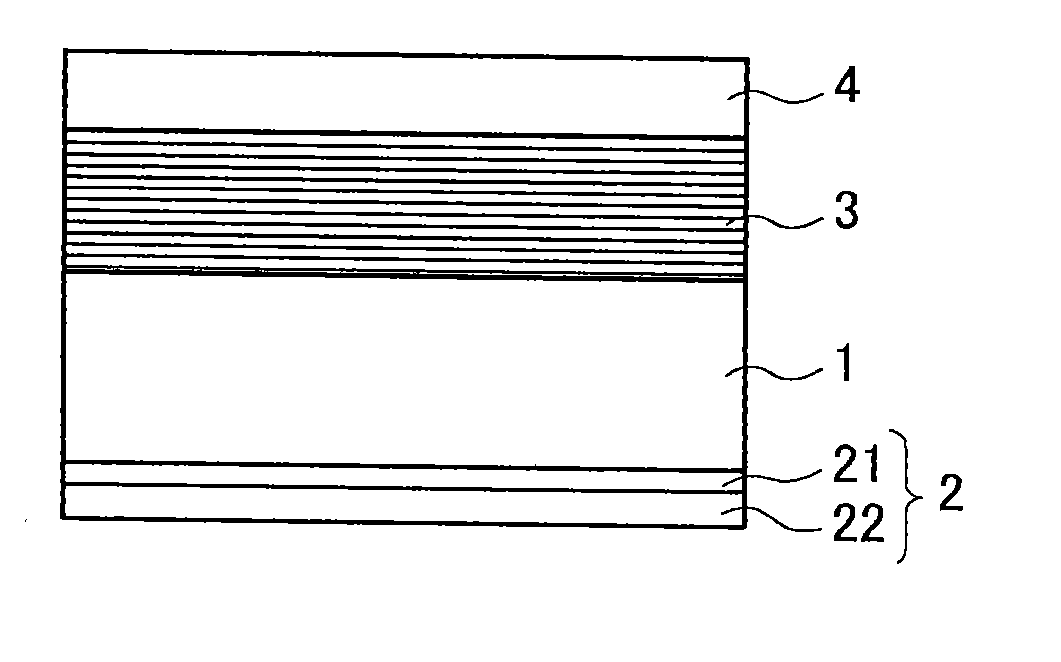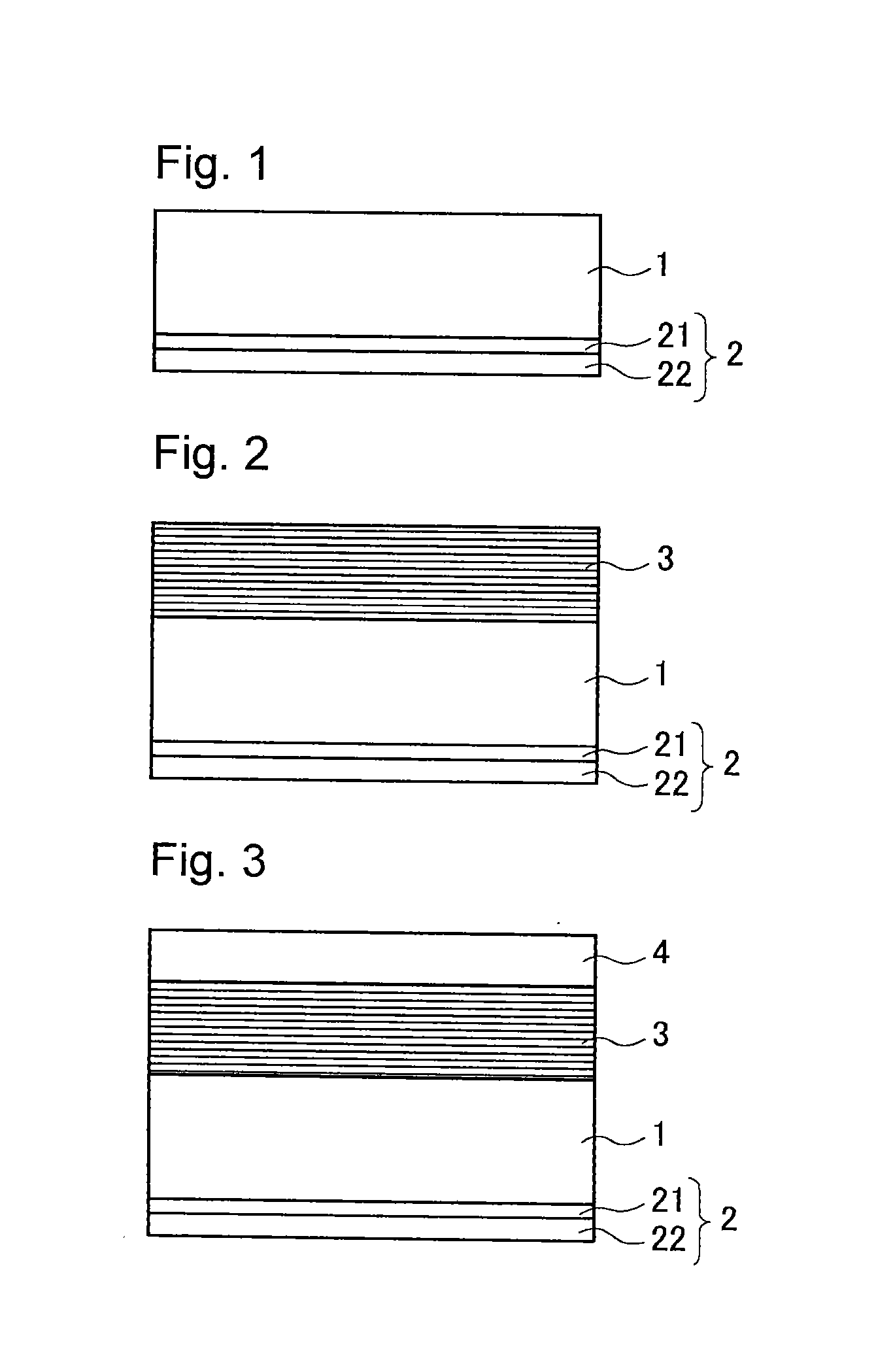Substrate with conductive film, substrate with multilayer reflective film and reflective mask blank for EUV lithography
a conductive film and substrate technology, applied in the field of substrates with multi-layer reflective films and reflective mask blanks for euv lithography, can solve the problems of not being able to use a conventional dioptric system like photolithography employing visible light or ultraviolet light, the conventional photolithography method has come close to its limit, and the effect of reducing the resistance of the conductive film
- Summary
- Abstract
- Description
- Claims
- Application Information
AI Technical Summary
Benefits of technology
Problems solved by technology
Method used
Image
Examples
example 1
[0136]In this Example, a substrate with a conductive film shown in FIG. 1, i.e. a substrate with a conductive film comprising a substrate 1 and on at least one surface of the substrate 1, a two-layer structure conductive film 2 (lower layer 21, upper layer 22) formed was prepared.
[0137]A glass substrate of SiO2—TiO2 glass (external dimensions: 6 inches (152.4 mm) square, thickness: 6.3 mm) was used as a substrate 1 for film-forming. This glass substrate has a thermal expansion coefficient of 0.02×10−7 / ° C. (at 20° C., this condition is applicable hereinafter), and a Young's modulus of 67 GPa. This glass substrate was polished to have a smooth surface having a surface roughness (rms) of at most 0.15 nm and a flatness of at most 100 nm.
[Formation of Lower Layer 21]
[0138]On the surface of the substrate 1, a CrOH film as a lower layer 21 was deposited by using a magnetron sputtering method. Specifically, after a deposition chamber was evacuated of air to be at most 1×10−4 Pa, magnetron ...
example 2
[0184]In this Example, a substrate with a conductive film, a substrate with a multilayer reflective film and an EUV mask blank were prepared under the same conditions in the same procedure as in Example 1 except that the film thicknesses of the respective layers of the two-layer structure conductive film 2 (lower layer 21, upper layer 22) were changed.
[Formation of Lower Layer 21]
[0185]On the surface of the same glass substrate (substrate 1) of SiO2—TiO2 glass as in Example 1, a CrOH film was formed as a lower layer 21 by a magnetron sputtering method. Specifically, after a deposition chamber was evacuated of air to be at most 1×10−4 Pa, magnetron sputtering was carried out by using a Cr target in an atmosphere of a mixed gas of Ar, O2 and H2 to form a lower layer 21 (CrOH film) of 20 nm thick. The deposition conditions for the lower layer 21 (CrOH film) are as follows.
[0186]Target: Cr target
[0187]Sputtering gas: mixed gas of Ar, O2 and H2 (Ar: 29.1 vol %, O2: 70 vol %, H2: 0.9 vol ...
PUM
| Property | Measurement | Unit |
|---|---|---|
| thickness | aaaaa | aaaaa |
| thickness | aaaaa | aaaaa |
| compressive stress | aaaaa | aaaaa |
Abstract
Description
Claims
Application Information
 Login to View More
Login to View More - R&D
- Intellectual Property
- Life Sciences
- Materials
- Tech Scout
- Unparalleled Data Quality
- Higher Quality Content
- 60% Fewer Hallucinations
Browse by: Latest US Patents, China's latest patents, Technical Efficacy Thesaurus, Application Domain, Technology Topic, Popular Technical Reports.
© 2025 PatSnap. All rights reserved.Legal|Privacy policy|Modern Slavery Act Transparency Statement|Sitemap|About US| Contact US: help@patsnap.com


